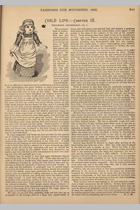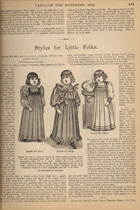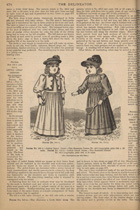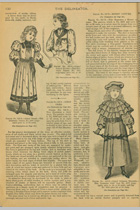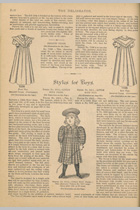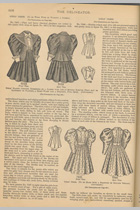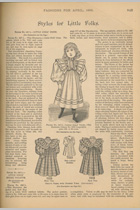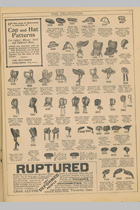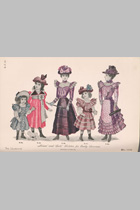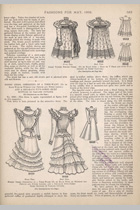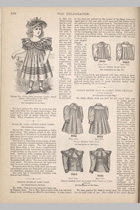Catalogues

The Delineator:
Journal of fashion, culture and fine arts, launched in 1876 by the Butterick Pattern Company ...
Images from the Library
and Archives
Christening and Baptismal Gowns
The Christian sacrament of baptism was an important milestone in a young child’s life, as symbolized by heavily embellished white cotton baptismal gowns. Early in the period, Ayrshire and other lightweight laces were the most popular embellishment, as seen in the Connolly family gown from around 1869. In 1867, Peter Connolly and his wife Margaret Moran, Irish immigrants living in Quebec City, relocated to Ottawa, where all 13 of their children were baptized in this gown. Fine needlework was greatly valued, as in the christening gown made by Mrs. Ulric Valiquette: a prized family heirloom that won first place at the Central Canada Exhibition in Ottawa in 1888, and which would later be passed down through four generations of her family.
By the 1870s, lightweight laces were outmoded due to vibrant new colours such as vivid blues and greens, which had become available with the invention of synthetic dyes. To stand out, bolder types of embroidery such as broderie anglaise became popular, and were used on all types of children’s wear. Later, fashions for baptismal and christening gowns became so long and full that the fabric was often reused for other garments when the children were grown.
Tradition ran deep with christening gowns: right across Canada, gowns were consistently ornamented with intricate pintucks, embroidery and lace. However, the cut of gowns and their accompanying garments, such as the bonnet and bunting bag, mirrored fashion. The bodices of most gowns were constructed with a triangular panel in the front and down the centre of the skirt, simulating women’s fashionable “hourglass” silhouette.


